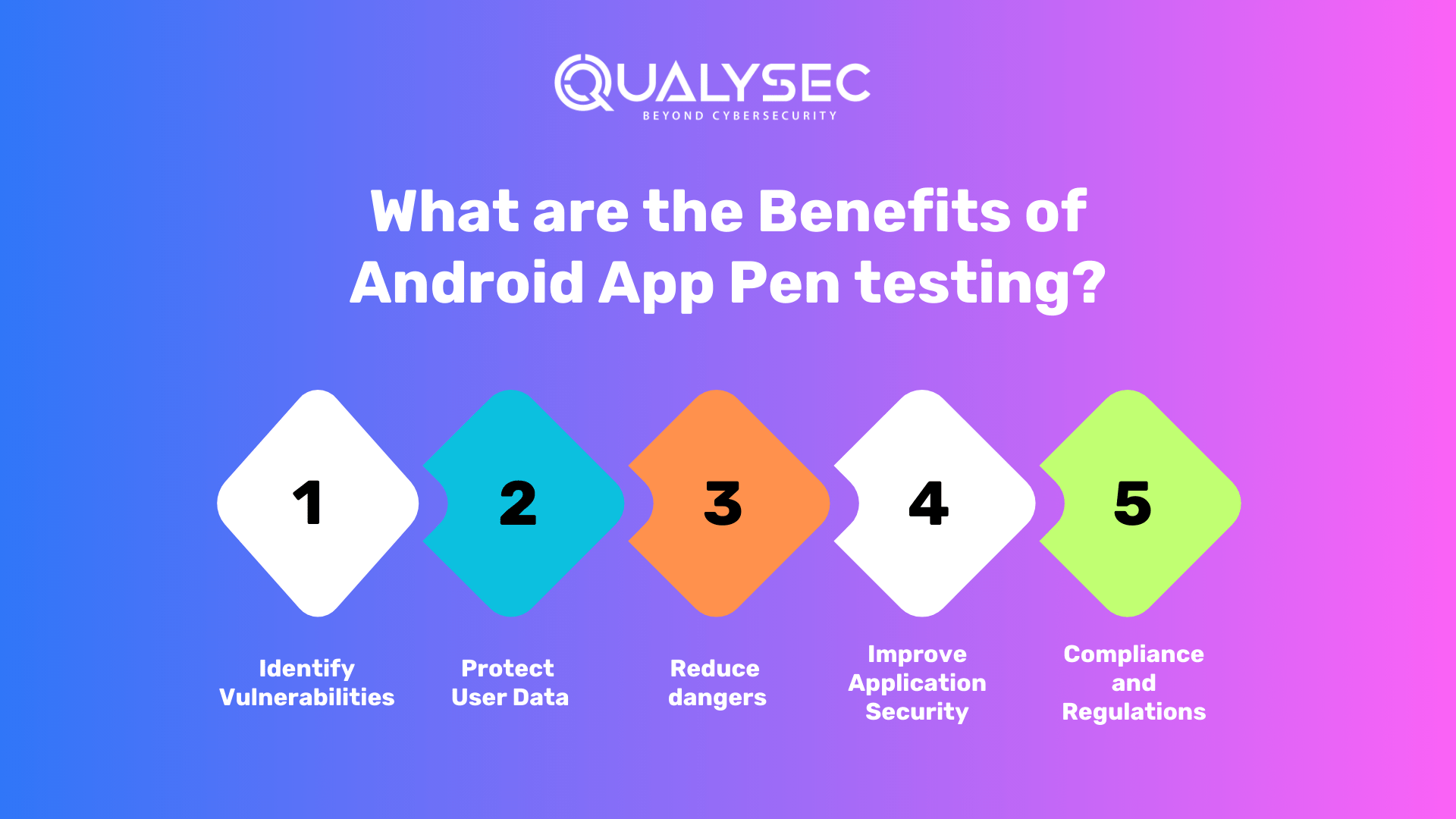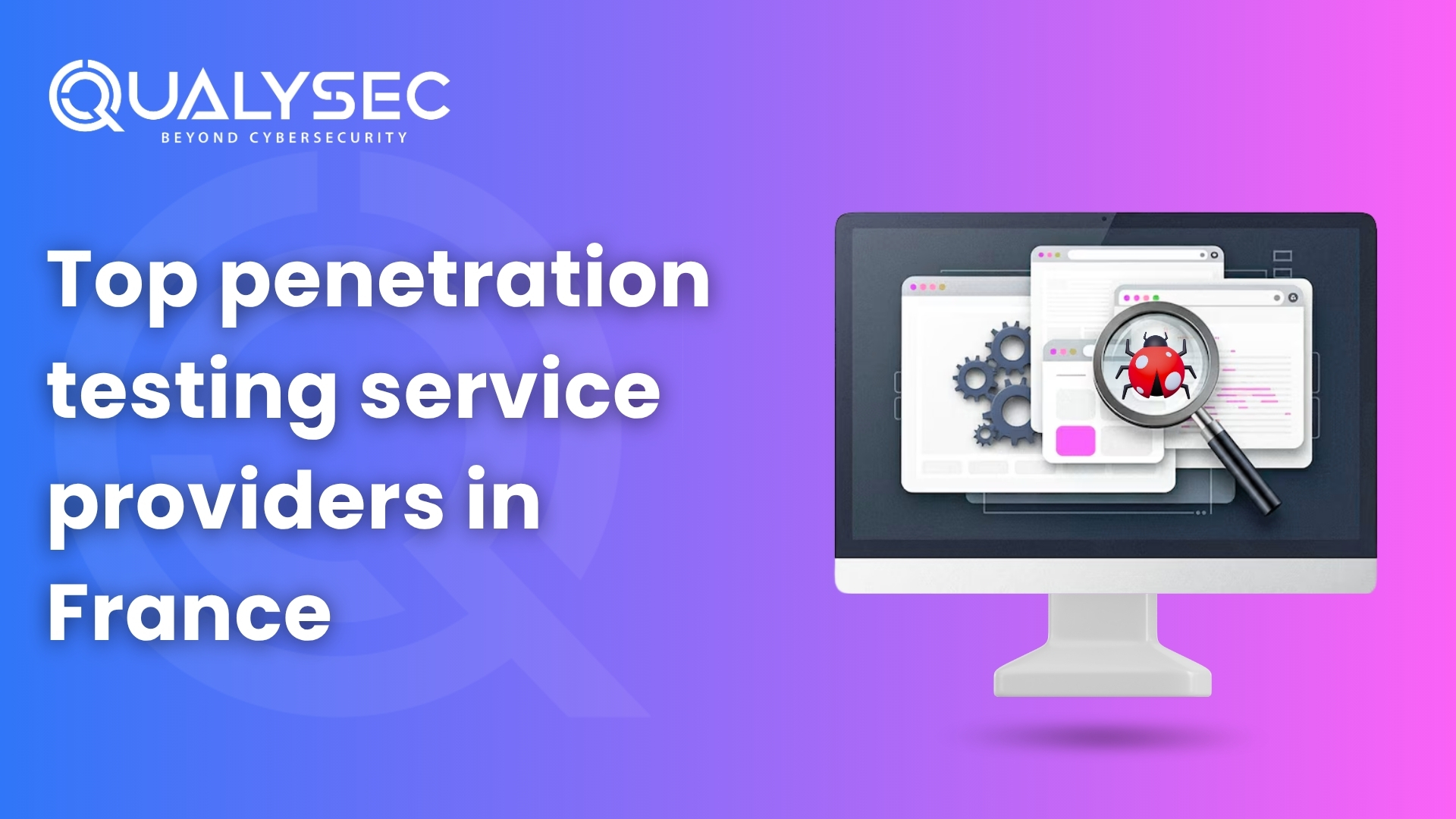As of 2023, the Android Play Store has 3.7 million applications, making it the most popular mobile operating system. Because of its numerous options, Android attracts the attention of hostile hackers who are always looking for flaws in mobile apps.
- One of the 25 OS vulnerabilities affects 82% of Android smartphones.
- Business apps are three times more likely to leak log-in information.
- One out of every four smartphone apps has high-risk security issues.
- 50% of the 5-10 million downloaded applications include security issues.
- Around 25% of Google Play applications contain security issues.
- About 35% of mobile device communications are unencrypted.
- More than one-third of the data sent by a device is exposed.
- Each mobile device connects to an average of 160 distinct IP addresses.
- 43% of mobile phone users require a password or pattern on their device.
- Password vulnerability is three times more likely in social networking apps.
- At least one high-risk security issue is present in 7% of mobile apps.
- The app includes security flaws in half of the apps with 5 to 10 million downloads.
Google has removed numerous applications from the Play Store due to security concerns. Developing a safe Android app necessitates extensive mobile application penetration testing. To assist you with this work, we have created an Android application penetration testing checklist with step-by-step instructions.
What is Android Application Penetration Testing?
Android pen testing, is used to find flaws in Android applications. It thoroughly examines the application’s components, functionality, and underlying infrastructure to identify any vulnerabilities that attackers may exploit.
Furthermore, pen testing’s primary purpose is to simulate real-world attack situations and give important information to improve the application’s security. This comprises code analysis, network connectivity, data storage, authentication systems, permission restrictions, and adhering to secure coding principles.
Is it Important to Conduct Android Pen testing?
Modern Android applications are utilized for a variety of reasons, including business, healthcare, finance, and education. These mobile applications, in addition to containing sensitive information, include security flaws.
Android app penetration testing services and developers can identify, repair, and mitigate security problems. In addition with new vulnerabilities being discovered on a daily basis, Android penetration testing is essential to avoiding fraud attempts, malware infections, and data breaches.
This is critical for any firm that wants to launch new software without worrying about legal or security risks. Mobile penetration testing may also be useful for evaluating the work of the development team and verifying the responsiveness of the IT team since tests might expose vulnerabilities and misconfigurations in back-end services utilized by the app.
What are the Benefits of Android App Pen testing?
Android app pen testing provides various advantages to businesses in defending against cyberattacks. Here are a few perks of conducting Android application pen testing:

- Identify Vulnerabilities:
- Android apps can be vulnerable to a variety of security flaws, including unsecured data storage, incorrect input validation, insecure communication, and insufficient authentication procedures. Furthermore, pen testing aids in identifying these flaws and vulnerabilities in the application’s code and settings.
- Protect User Data:
- Mobile apps frequently handle sensitive user information, such as personal information, financial information, and logic credentials. Penetration Testing assists in ensuring that adequate security measures are in place to safeguard user data from unauthorized access, data breaches, or abuse.
- Reduce dangers:
- By performing Android pen testing, developers and businesses may detect and comprehend the possible dangers and hazards that their Android apps may face. This information enables them to assess and eliminate hazards before attackers may exploit them.
- Improve Application Security:
Pen testing can boost an Android app’s overall security posture. By detecting vulnerabilities and weaknesses, developers may install security patches, fixes, and upgrades to improve the app’s resilience against assaults.
- Compliance and Regulations:
- Specific security compliance standards and regulations must be met in many businesses and areas. Furthermore, mobile app penetration testing can assist firms in meeting these criteria and demonstrating due diligence in safeguarding user data security and privacy.
How Does Android App Pen Testing Work?
Here are the steps that the process of penetration testing containing all the phases of how the testing is done:
Gathering Information
The fundamental goal of penetration testing is to obtain as much information as can. This includes a two-pronged approach: utilizing readily available information from your end, as well as utilizing numerous ways and tools to get technical and functional insights. The testing company collaborates with your team to gather critical application information. Schematics for architecture, network topologies, and any existing security measures may be provided. Furthermore, understanding user roles, permissions, and data flows is critical for building an effective testing strategy.
Planning
The testing company begins the penetration testing process by meticulously defining the objectives and goals. They delve extensively into the technical and functional complexity of your application. Furthermore, this comprehensive investigation allows the testers to alter the testing strategy to address specific vulnerabilities and threats specific to your environment.
A comprehensive penetration testing plan is created, outlining the scope, methodology, and testing criteria. To lead the testing process, the business will give a high-level checklist. This checklist provides a solid foundation by addressing crucial subjects such as authentication mechanisms, data processing, and input validation.
Furthermore, they acquire and prepare the essential files and testing instruments. Configuring testing settings, verifying script availability, and developing any bespoke tools required for a smooth and successful evaluation are all part of this process.
Auto Tool Scan
During the penetration testing process, especially in a staging environment, an automated and intrusive scan is necessary. This scan comprises utilizing specialized tools to seek vulnerabilities on the application’s surface level carefully. The automated tools mimic prospective attackers by crawling through every request in the application, uncovering potential weaknesses and security gaps.
By running this intrusive scan, the testing company proactively finds and patches surface-level vulnerabilities in the staging environment, acting as a protective measure against potential assaults. This strategy provides not only a thorough review but also quick rectification, boosting the application’s security posture before it is deployed in a production environment.
Manual Penetration Testing
A penetration testing company offers deep manual Android app penetration testing services that are tailored to your specific requirements and security standards. This one-of-a-kind method allows for a thorough examination of potential vulnerabilities across the Android application, including:
- Client-side Injection Testing includes inspecting vulnerabilities such as SQL injection, command injection, and data integrity checks to ensure that strong security measures are in place.
- Authorization and authentication including insecure authentication, login page bypass, privilege escalation, and insecure direct object references (IDOR) are all tested, boosting the system’s overall resistance.
- Validation of Input and Output Testing focuses on discovering flaws such as XSS, insufficient input validation, and Remote Code Execution in order to strengthen the application against future exploitation.
- Configuration Review entails inspecting unsafe default settings and file permissions to eliminate any security risks and ensure a strong defense against unwanted access.
- Data Storage Testing includes meticulously inspecting SQL databases, Log Files, and Binary data to find and correct any storage-related risks while protecting sensitive information.
- Platform Usage Testing includes assuring adherence to security best practices by checking compliance with published rules and conducting Unintentional Misuse testing.
- Cryptography testing comprises a thorough examination of encryption techniques and key management processes in order to strengthen the security of sensitive data against potential breaches.
- Code Quality Testing entails reverse engineering the application files and extensively analyzing for bad code quality, hence improving the codebase’s general resilience and maintainability.
- Backend API testing includes collecting and examining each API request, doing in-depth penetration testing to find and correct flaws, and assuring data transaction security.
Reporting
The testing team systematically identifies and categorizes vulnerabilities discovered throughout the evaluation, ensuring that potential risks are recognized. After that, a senior consultant does a high-level penetration test and reviews the entire report.
This ensures the highest level of quality in testing methods as well as the accuracy of reporting. This thorough documentation is a valuable resource for understanding the security state of the application.
Key Report Components:
- Vulnerability Name: Specifies each vulnerability, such as SQL Injection, providing a precise identification.
- Likelihood, Impact, Severity: Quantifies the potential risk by assessing the likelihood, impact, and severity of each vulnerability.
- Description: Offers an overview of the vulnerability, enhancing comprehension for stakeholders.
- Consequence: Describes how each vulnerability could impact the application, emphasizing the importance of mitigation.
- Instances (URL/Place): Pinpoints the location of vulnerabilities, facilitating targeted remediation efforts.
- Step to Reproduce and POC: Provides a step-by-step guide and a Proof of Concept (POC) to validate and reproduce each vulnerability.
- Remediation: Offers actionable recommendations to effectively eliminate detected breaches, promoting a secure environment.
- CWE No.: Assigns Common Weakness Enumeration identifiers for precise classification and reference.
- OWASP TOP 10 Rank: Indicates the vulnerability’s ranking in the OWASP TOP 10, highlighting its significance in the current threat landscape.
- SANS Top 25 Rank: Indicates the vulnerability’s ranking in the SANS Top 25, further contextualizing its importance.
- Reference: Provides additional resources and references for a deeper understanding of vulnerabilities and potential remediation processes
This comprehensive reporting method ensures that stakeholders receive relevant insights into the application’s security condition as well as practical recommendations for a solid security posture.
Latest Penetration Testing Report

Remediation Support
If the development team requires support in reproducing or reducing reported vulnerabilities, the service provider delivers a critical service through consultation calls. Penetration testers with in-depth knowledge of the discovered issues promote direct engagement to aid the development team in effectively analyzing and addressing security threats. This collaborative approach ensures that the development team receives competent advice, allowing for the seamless and speedy resolution of vulnerabilities to enhance the overall security posture of the application.
Retesting
Following the completion of vulnerability mitigation by the development team, a vital stage of retesting happens. To check the efficacy of the treatments administered, our staff undertakes a detailed examination. The final report is lengthy and includes:
- History of Findings: This section provides a full record of vulnerabilities discovered in past assessments, providing a clear reference point for following the progress of security solutions.
- State Assessment: Clearly defines the state of each vulnerability, whether it is fixed, not addressed, or ruled out of scope, providing a comprehensive summary of the remediation outcomes.
- Proof and Screenshots: Adds physical proof and screenshots to the retest report, providing visual validation of the corrected vulnerabilities. This validates the procedure and assures a thorough and accurate assessment of the application’s security state following repair.
LOA and Certificate
The testing company goes above and above by providing a Letter of Attestation, which is an important document. Furthermore, this letter supports facts from penetration testing and security assessments, and serves multiple purposes:
- Level of Security Confirmation: Use the letter to obtain physical certification of your organization’s security level, ensuring stakeholders of your security measures’ strength.
- Showing Stakeholders Security: Show clients and partners your dedication to security by using the letter as a visible witness to the thoroughness of your security processes.
- Fulfillment of Compliance: Address compliance needs quickly, as the Letter of Attestation is a helpful resource for satisfying regulatory criteria and establishing compliance with industry-specific security practices.
Furthermore, the testing company will provide a Security Certificate, which will enhance your ability to represent a secure environment, reinforce confidence, and meet the expectations of various stakeholders in today’s dynamic cybersecurity landscape.
What are the Challenges in Android App Pen testing?
Android app testing can be challenging sometimes. Below are some of the challenges that testers come across while performing Android pen testing:
Complexity of Mobile Apps
Android apps are growing more sophisticated as they incorporate more functions and third-party libraries. Furthermore, this complexity might result in a large attack surface, making it difficult to discover all potential weaknesses.
Mitigation Strategies:
- Conduct extensive code reviews to uncover possible flaws in complicated app designs.
- Use static analysis techniques to efficiently detect hidden vulnerabilities.
Insufficient and Secure Communication
Android apps frequently interface with external servers or APIs, which can make them vulnerable to eavesdropping and data breaches if not appropriately protected.
Mitigation Strategies:
- Encrypt all communication between the app and external systems using powerful protocols such as SSL/ TLS.
- Increase security by pinning certificates to protect against man-in-the-middle attacks during conversations.
Inadequate Binary Protections
Android apps, which are released as binary files, are vulnerable to reverse engineering and manipulation if sufficient binary safeguards are not used. As a result, it is critical for developers to add safeguards against unauthorized access to the app’s code and harmful alterations, hence improving overall app security.
Mitigation Strategies:
- Use binary protection measures, such as code obfuscation, to prevent attackers from understanding the app’s code.
- Include tamper detection methods to detect any changes made to the application.
Deep Links
While deep links are a useful feature in Android apps for seamless user navigation, they also present a typical difficulty in penetration testing. These links provide immediate access to specific in-app content while circumventing the app’s usual entry points.
Mitigation Strategies:
- Implement comprehensive deep link authentication and authorization procedures, checking access permissions before users access deep-linked information.
- Validate deep linkages and follow secure coding methods to effectively reduce associated risks.
Web View Activity
If not done effectively, web view activity, which permits displaying online information within an app, might pose security issues. Attackers can use this capability to run malicious scripts, potentially resulting in data breaches or unauthorized access to the device’s resources.
Mitigation Strategies:
- To avoid script injection attacks, validate all user inputs within the web view.
- To reduce the danger of code execution threats, consider deactivating JavaScript in the web view.
5 Best Practices of Android App Pen Testing
Here are some of the best practices for conducting Android application penetration testing:
- Obtain Prior Authorization:
As previously stated, you must always have clear and explicit authorization to perform pen testing on any specific application. Unauthorized pen testing is not just unethical; it may also result in legal consequences.
- Consider Open Source Intelligence (OSINT): Begin your pen test by obtaining as much information as possible about the program, its backend servers, and the organization that created it. This information can provide useful context and assist in identifying possible places of attack.
- Be Methodical: Your testing strategy should be methodical. Follow our checklist, but feel free to modify it to reflect the specifics of your application and the data you gathered during the OSINT stage.
- Keep Records: Throughout the pentesting process, keep a journal of your discoveries. This will make it easier to provide a full report after the pentest is conducted.
- Collaborate with the Developers: Working with the development team can result in more fruitful solutions. Their knowledge of the program can guide the pentest in the proper direction, and their participation will be essential when it comes time to patch the vulnerabilities you’ve discovered.
How Can QualySec Help in Android App Pen Testing?
With the most powerful defenses, QualySec’s mobile app penetration testing solution provides organizations with the most up-to-date technologies and comprehensive penetration testing to keep you one step ahead of intruders. Furthermore, we are a significant penetration testing partner that offers cutting-edge solutions to the banking, financial, and insurance industries in order for them to effectively secure themselves and their data from current and emerging cyber threats.
Our Android application penetration testing service is designed to help you find and resolve cybersecurity issues in your Android infrastructure. Other services include:
- Web App Pentesting
- Mobile App Pentesting
- API Pentesting
- Cloud Security Pentesting
- IoT Device Pentesting
- AI ML Pen testing
Our skilled penetration testers will execute a vulnerability test scan on the whole program as well as its underlying infrastructure. It’s a detailed audit that helps you find security issues so you can fix them before a hacker can.
Deep penetration testing, in which our professionals conduct lengthy and complex investigations to find holes in a company’s mobile infrastructure, is one of our key strengths. These tests go beyond surface-level scanning to look for weaknesses deep within the system.
Important Features:
- Over 3,000 tests are utilized to detect and eradicate all types of vulnerabilities.
- Capable of detecting faults in business logic and security issues.
- Manual pen testing guarantees that no false positives occur.
- Compliance scans for SOC2, ISO 27001, and other related standards.
- On-demand remedial assistance is provided by security specialists.
QualySec’s unwavering commitment to deep pen testing has earned us an incredible zero-false positive report record. Following extensive testing, we provide clients with a detailed and informative report that properly identifies weaknesses and potential exploits.
We go above and beyond by collaborating with developers to assist them in the bug-fixing process, ensuring that reported vulnerabilities are fixed as soon as possible. Businesses receive a security certificate at the end of a project as a final stamp of approval, establishing trust in our cybersecurity procedures and strengthening their defenses against potential threats.
Talk to our Cybersecurity Expert to discuss your specific needs and how we can help your business.
Conclusion
Android application penetration testing is the process of finding and analyzing Android application security issues. It entails evaluating the application’s code, setup, and behavior to ensure that it is safe and in accordance with industry rules and guidelines.
Android penetration testing is important because it assists organizations in identifying and correcting security flaws before they are exploited by attackers. It also helps to ensure that apps follow industry best practices and regulatory standards.
Mobile app security testing makes use of a range of technologies, including static analysis tools, dynamic analysis tools, and penetration testing tools. By adopting the best practices mentioned above, organizations may guarantee that their applications are safe and secure from possible risks.
Reach out to us for professional help and a better understanding of how to pentest your mobile app before launch. Secure your Android application today!
FAQs
What is Android application penetration testing?
It is a systematic process for finding faults in Android apps, ensuring their security, and adhering to security rules. It comprises attempting to compromise the Android app with various ways and tools. Android penetration testing seeks to identify and repair app vulnerabilities before they are exploited by cybercriminals.
How will you protect the data during and after testing?
Because internet surfing takes place on the internet, hackers can access any personal information you provide. To circumvent this, use a browser that supports encryption and login credentials. This prevents hackers from stealing your information when you’re taking a test online.
What is penetration testing in mobile applications?
Penetration testing for mobile applications is used to identify security flaws in mobile applications in order to defend them from attack. The Apple App Store and Google Play both have approximately 6 million mobile apps. Organizations require tested mobile security across all app components.
What are the benefits of mobile application penetration testing?
Insecure data storage, inadequate encryption, weak authentication techniques, input validation problems, and open APIs are all security risks for mobile apps. Penetration testing enables firms to detect these vulnerabilities and efficiently address them.
What is the primary purpose of penetration testing?
Penetration testing is an effective way for finding hazards in a specific, operational system that includes goods and services from numerous suppliers. It might also be extended to ‘in-house’ designed systems and applications.
How effective is penetration testing?
Penetration testing is a great approach for assessing your system’s security. It’s also a wonderful technique to identify security flaws before they’re exploited. Penetration testing is distinct from vulnerability scanning, which is a technique for finding known flaws.


















































































































































































































































































































































0 Comments